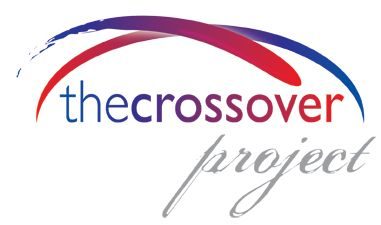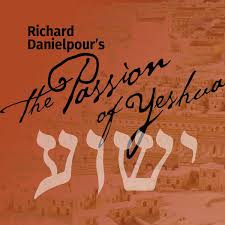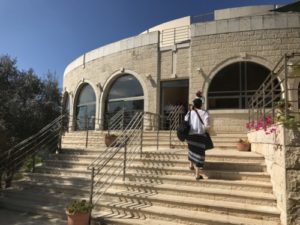Resurrecting the Jewish Jesus
A message from Richard Danielpour
“At the first night of Passover, the youngest person at the table asks the question “Why is this night different from all other nights?” Appropriately, the place to begin speaking of The Passion of Yeshua is to ask the question “Why is this Passion Oratorio different from all other Passion Oratorios?”
A devoted educator and mentor, he grew up with both Christian and Jewish faiths in his household. His parents were born in Iran, and he was free to examine his faith from multiple perspectives. Ultimately, he accepted that Jesus was the foretold Messiah, but this did not disavow his Jewishness. After all, Jesus was Jewish.
“One of my aims in writing this work was to imagine the story of the last day of the life of Jesus of Nazareth. I thought if I could somehow take myself back in time and recreate what those last hours were like, that I may have a more developed understanding of who Jesus really was, without the 1800 years of European accretions and horrible acts that were committed in Europe in the name of Christianity. I think it is impossible for Jews and Christians alike to see the person of Jesus clearly and objectively because of the history of Christianity in Europe from the time that Constantine made it the official religion of the Holy Roman Empire, shortly after 300 A.D. This oratorio is, among other things, an attempt to help me, and others, understand more fully the connection of Jesus of Nazareth to Jewish history.
“The great St. Matthew Passion of Bach was a pivotal work in my life. I heard it for the first time at 17, and hearing it was for me one of the most substantive confirmations of my belief that I was put on this earth to write music. This monumental work remained a touchstone for me over many years, so it is not surprising that when I began to think about The Passion of Yeshua structurally, which is how I first conceive of any work, I found myself returning to this magnificent music of Bach. The harmonic, melodic, rhythmic, and timbral language of my work are markedly different from Bach’s, but there are moments, particularly in the last scene, which in their own way, bow to the great master. I also felt as a young person uncomfortable with and aware of some of the anti-Semitic sentiments that reside in this very Lutheran work. I had thought as a young man if I could one day write a work without these negative connotations, I would feel as if I had done something worthwhile.
“Another central issue in the writing of the work was generated by the presence of the two most important women in the Gospel narrative — Mary the mother of Jesus, and Mary Magdalene, who apparently was an important and central disciple in the mission of Jesus and quite possibly his companion. While the presence of these women seems to be far more in the forefront of many of the censored Gospels by the early Roman Catholic Church, they are present but not often heard in the four Gospels that are now part of what we refer to as The New Testament. I wanted these women to have a powerful and central place in the musical commentary related to the narrative, and in doing so, give them a voice. The story is male dominant throughout, and I felt that there needed to be more female energy present in the piece as a whole.
“The text of The Passion of Yeshua is divided into two languages– Hebrew and English. The Hebrew texts are all drawn from the Jewish scriptures, or Tanakh, while the English texts are taken from all four Gospels, but in two distinctively different translations – the Revised Standard Version, which has for years been understood as the Anglican revision to the original King James Version, and the Complete Jewish Bible, which is an English version by David H. Stern. The Stern translation is peppered with words that are in Hebrew, thus keeping in mind within the narrative of where all of this takes place. Many of the Hebrew texts sung by either the chorus or by the two female soloists are messianic prophecies. The most important of these are from the 53rd chapter of Isaiah. Isaiah is considered to be one of the most messianic of all the prophets, foretelling the coming of the Jewish messiah. The use of Hebrew and English are also symbols in The Passion of Yeshua; the Hebrew is symbolic of the past, while the English is an archetype for the present.
“The Passion of Yeshua is in two parts of seven scenes each. There are seven characters, or solo singers, and seven choruses, four short chorales, and three ‘grand’ choruses. There are also seven movements in which the two female soloists (Miryam and Miryam Magdala) sing. Four are arias, and three are duets. The number seven has always been associated with “completion” for the idea of completion in Jewish mystical thinking.
“I have been thinking about writing this work for the last 25 years. It had evolved considerably in my mind before I began in earnest to compose it. At first, I thought that I might write this in the languages of Aramaic, Hebrew, and English, but I realized that Aramaic and Hebrew are too similar in sound and would cause confusion. By the end of 2015, I realized that the time had come. I spent nearly three months assembling the texts — May, June, and the first three weeks of July 2016 were probably the most difficult work in the process. I composed the short score of the work from July 21 until August 27, 2016, in Saratoga Springs. And I then worked on subsequent drafts of the short score until January 2017, when I began work on the full score. I finished the full score at The MacDowell Colony on July 16, 2017 and continued making small revisions to the score until December 2017.
“As an American born of Middle Eastern, Iranian parentage, I was fortunate to be part of an extended family that embraced the rich heritage of both the Jewish and Christian traditions. This made my childhood household a place of open inquiry. After many years of living with the question of Jesus, I began to accept, in head and heart, that Jesus was the culmination of 4000 years of Jewish prophets and that he was indeed the long awaited for Messiah that our people had been hoping for, for centuries. But I could not go into a synagogue because I knew that I would not be accepted for the total sum of my beliefs and attending a church felt alien to me because I felt there was no place for my Jewishness to reside. There was no “place” for my beliefs, and so what I did over the years was to build a Temple or Cathedral in sound. This is for me, a place where God resides.
“I have never intended for The Passion of Yeshua to be a polemical statement. Within this hour and forty minute piece, I wanted to ask a question, namely: “Who is this man Jesus, and why after nearly two thousand years is he arguably the most talked about person in human history?” This was the very question I found myself asking as a young man nearly 44 years ago. And it is fitting then that The Passion of Yeshua begins with a question from the first verse of the 53rd chapter of Isaiah: “Who has believed what we have heard and to whom has the arm of the LORD been revealed?”
“As a rule, I do not believe in “telling” a listener how they should feel about a work that I have composed. That attitude would amount to a form of musical fascism. I believe that the listener is entitled to react in whatever way they wish. They are, hopefully, active participators in the realization of a work, and are respectfully entitled to their own responses.
“One of the things that has always attracted me to the person of Jesus as a teacher is that, unlike organized religion in general, no one was ever excluded; he welcomed people of all walks of life. This can also be said to be true about music itself: with music no one is excluded, and all are invited.”
https://bpo.org/wp-content/uploads/2018/12/A-message-from-Richard-Danielpour.pdf
Quote from https://www.orartswatch.org/the-passion-of-yeshua-preview-resurrecting-the-jewish-jesus/
Audio samples available at https://naxos.lnk.to/855988586AC!Danielpour




